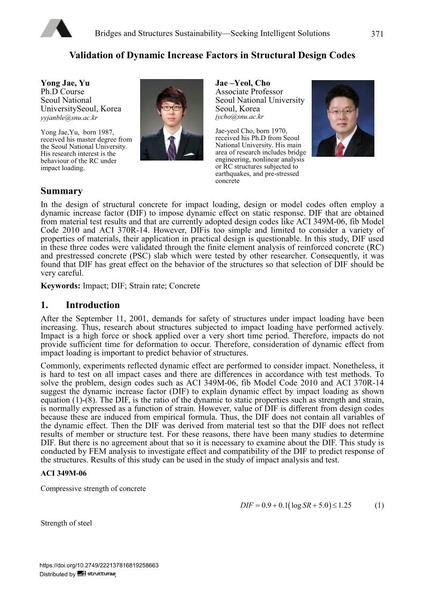Validation of Dynamic Increase Factors in Structural Design Codes

|
|
|||||||||||
Détails bibliographiques
| Auteur(s): |
Yong Jae Yu
Jae-Yeol Cho |
||||
|---|---|---|---|---|---|
| Médium: | papier de conférence | ||||
| Langue(s): | anglais | ||||
| Conférence: | IABSE Conference: Bridges and Structures Sustainability - Seeking Intelligent Solutions, Guangzhou, China, 8-11 May 2016 | ||||
| Publié dans: | IABSE Conference, Guangzhou, China, 8 – 11 May 2016 | ||||
|
|||||
| Page(s): | 371-377 | ||||
| Nombre total de pages (du PDF): | 7 | ||||
| Année: | 2016 | ||||
| DOI: | 10.2749/222137816819258663 | ||||
| Abstrait: |
In the design of structural concrete for impact loading, design or model codes often employ a dynamic increase factor (DIF) to impose dynamic effect on static response. DIF that are obtained from material test results and that are currently adopted design codes like ACI 349M-06, fib Model Code 2010 and ACI 370R-14. However, DIFis too simple and limited to consider a variety of properties of materials, their application in practical design is questionable. In this study, DIF used in these three codes were validated through the finite element analysis of reinforced concrete (RC) and prestressed concrete (PSC) slab which were tested by other researcher. Consequently, it was found that DIF has great effect on the behavior of the structures so that selection of DIF should be very careful. |
||||
| Mots-clé: |
béton
|
||||
